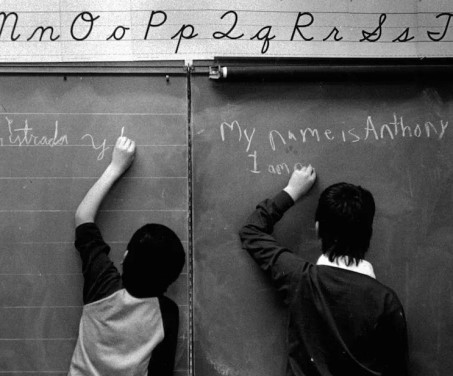How a 1974 U.S. Supreme Court Case Still Influences English-Learner Education
By Ileana Najarro
Najarro writes about the educational changes that have occurred in the past 50 years for English learners since the ruling in the U.S. Supreme Court case, Lau v. Nichols in 1974. Although the Bilingual Education Act was passed in 1968, and school districts could get grants for bilingual education through Title VII of the Elementary and Secondary Education Act, it was not required.

Lau v. Nichols was between Chinese American families and the San Francisco Unified School District. Its core argument was that without language support, the education provided only in mainstream classes was “discrimination under Title VI of the Civil Rights Act of 1974”. It was determined that equal education services required additional resources to be equitable. In spite of the significance of this ruling, like the 1954 ruling on racial segregation in Brown v. Board of Education of Topeka, the results have been mixed.
After the Bilingual Education Act was passed in 1968, school districts could get grants for bilingual education through Title VII of the Elementary and Secondary Education Act, but again it was not required. With the 1981 case of Castañeda v. Pickard in which a Texas district was deemed as violating the Equal Educational Opportunities Act because the needs of English learners were not met, three English learner program evaluation criteria were developed.
- “Whether the program is ‘informed by an educational theory recognized as sound by some experts in the field or, at least, deemed a legitimate experimental strategy.’
- Whether the programs and practices used by a school system are ‘reasonably calculated to implement effectively the educational theory adopted by the school.’
- And whether the school district evaluates whether its programs ‘produce results indicating that the language barriers confronting students are actually being overcome.’”
However, as a result, the focus moved away from bilingual programs, and in 1988, funding for English-only programs was increased. After 1980, hostility towards immigration grew, and in some states, including California, bilingual education was banned.

In 2002, with another change in administration and No Child Left Behind, the goal for English learners became English language acquisition with assessment and accountability required. Assessments improved from testing only listening and speaking to also testing reading and writing. There has also been a shift from considering students’ need to learn English as a deficit to bilingualism as an asset. Yet, support for English learners varies widely. Some schools have dual language programs, some support English learners in content classes, while others continue with English-only instruction.
Now, although dual language programs are considered an ideal situation, and Miguel Cardona, the U.S. Secretary of Education, would like to expand these, many English learners cannot participate because of the lack of programs. The conclusion is that more research needs to be done to find the best support for English learners and to create policies that will ensure these are implemented.


